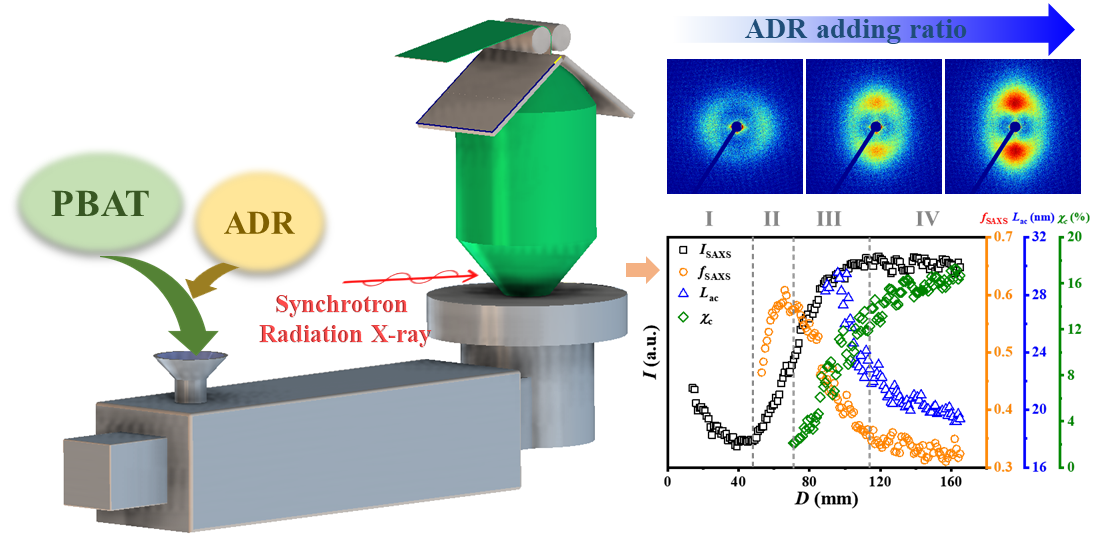Under the joint guidance of Prof. Li Liangbin and Associate Professor Chen Wei, Ph.D. students Zhao Haoyuan and others used synchrotron radiation small- wide-angle X-ray scattering techniques (SAXS / WAXS) to study biodegradable mulch materials with varying content of chain extenders. It reveals the microscopic mechanism of the chain extender ADR to improve the stability of PBAT film blowing processing, and provides theoretical guidance for the industrial production of biodegradable polyester materials. Related research work was recently published in the journal Biomacromolecules.
One prerequisite for the large-scale application of biodegradable polymers is the manipulation of macroscopic performances of commercially available biopolymers during processing according to different real service requirements. Herein, the microstructural evolution of poly(butylene adipate-co-butylene terephthalate) (PBAT) modified by chain extender during film blowing was investigated by in situ synchrotron radiation X-ray scattering to unveil the origin of different performances. The chain dynamics difference induced by the chain extender was first characterized by the rheological measurement and 1H Multiple Quantum (MQ) NMR. It shows that the terminal relaxation is significantly slowed down, while the locally segmental dynamics is not apparently changed. With the assistance of the custom-built film blowing apparatus, the microstructure right above the die exit (D = 13−165 mm) was in situ, simultaneously captured by small- and wide-angle scattering (SAXS/WAXS), where four distinct regimes can be defined. Only the PBAT melt signals are found in regime I, whereas the formation of the mesomorphic domains as shown by the SAXS streaks appearing in regime II. The crystal shows up in regime III, where the WAXS signal appears. A dramatic increment of the crystallinity is found in regime III, which contributes to the continuous increasing bubble modulus with the formation of the crystal-based network. Such a crystal-based network is filled with crystals in regime IV, where the diameter of the PBAT bubble remains constant. The addition of the chain extender is found to significantly influence the structural evolution within different regimes. These dynamics and structure information could supply general guidance for bubble stability improvement and modification of macroscopic performances of biodegradable polymer products.
This work was financially supported by the National Key R&D Program of China (2016YFB0302500), the Fundamental Research Funds for the Central Universities (WK2310000079), and the National Natural Science Foundation of China (51633009). The SR-WAXS/SAXS experiments were carried out at the beamline BL16B1 in Shanghai Synchrotron Radiation Facility (SSRF).

Related links:https://pubs.acs.org/doi/10.1021/acs.biomac.9b00975


